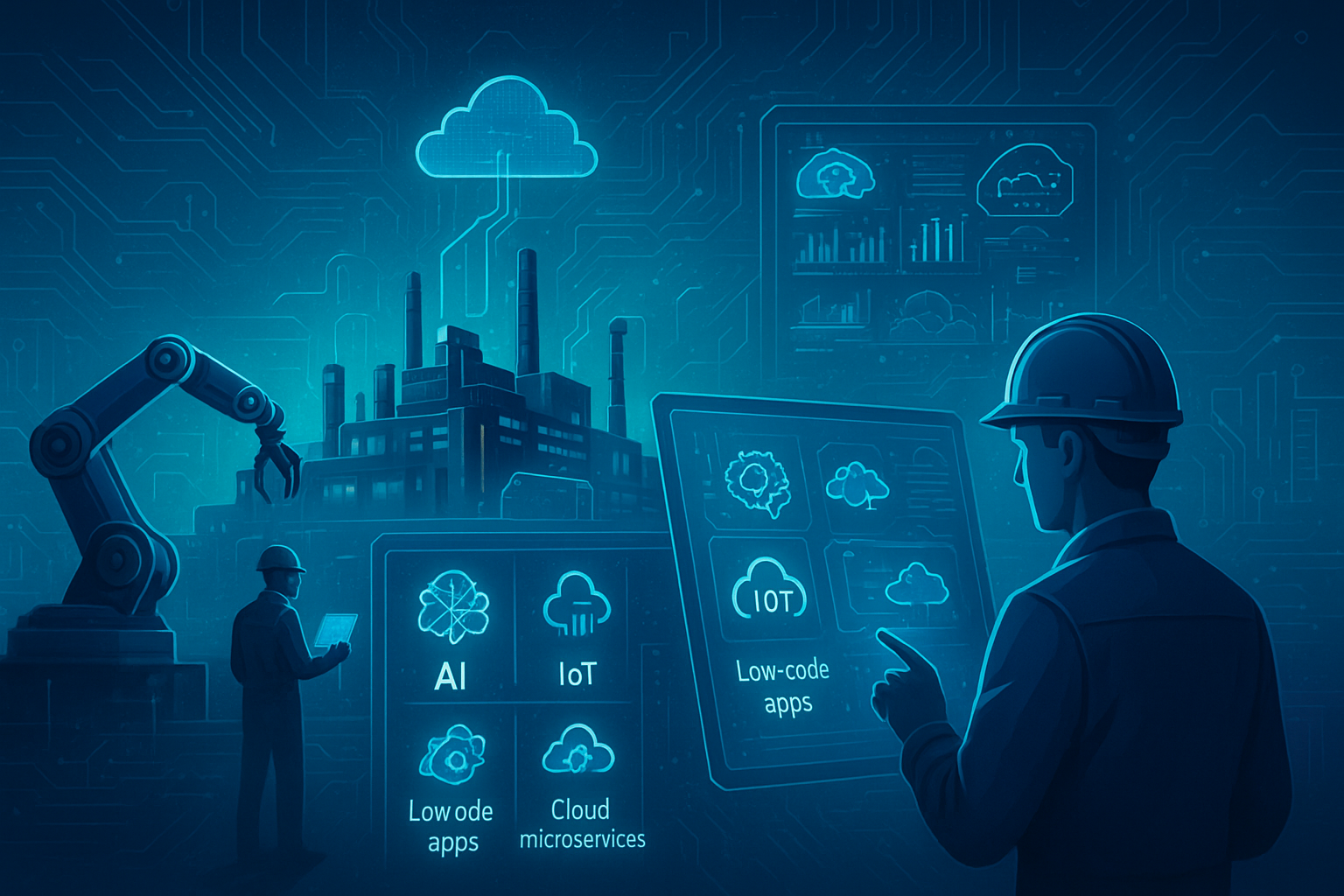Top 7 Digital Engineering Solutions Transforming Industrial Workflows in 2025
As we step deeper into the Industry 4.0 era, engineering teams are under mounting pressure to innovate, automate, and accelerate delivery cycles. From asset-heavy industries like manufacturing and oil & gas to digital-first fintechs and energy startups, one thing is clear—custom low-code engineering applications are rapidly reshaping industrial workflows.
But how exactly are digital engineering solutions redefining how teams operate in 2025? Which tools, trends, and platforms are leading the charge?
Let’s dive into the top 7 innovations changing the game.
-
Low-code and no-code platforms are empowering engineering teams to build industrial-grade apps faster.
-
AI/ML integration is streamlining predictive maintenance and design automation.
-
Cloud-native digital twins are revolutionizing how industrial assets are modeled and managed.
-
Custom engineering applications reduce dependency on legacy systems, improving agility and scale.
1. Low-Code Platforms for Custom Engineering Applications
Low-code development is no longer just a buzzword. For industrial and engineering teams, it’s a core enabler of agility and cost-efficiency.
Key Benefits:
-
Drastically reduce development cycles (by up to 70%)
-
Democratize app creation across technical and non-technical users
-
Ensure quicker iteration and deployment in high-compliance environments
How does low-code benefit industrial engineering teams compared to traditional development?
Custom apps built on low-code platforms like OutSystems, Mendix, and Retool now support complex use cases—such as real-time monitoring dashboards, inventory automation tools, and CAD integration modules.

2. Digital Twins: Virtualizing Industrial Assets
Digital twin technology has moved beyond theory. In 2025, it’s foundational for predictive maintenance, asset monitoring, and simulation testing.
Use Cases:
-
Simulate industrial environments to test design modifications
-
Predict equipment failure before it disrupts operations
-
Integrate with IoT for real-time data capture and feedback loops
Companies like GE Digital and Siemens are leading the way by embedding digital twins into manufacturing and energy systems.
3. AI-Powered Engineering Workflow Automation
AI is no longer a futuristic luxury—it’s the nervous system of modern digital engineering. In 2025, AI engines are transforming how workflows are managed, analyzed, and optimized.
Top Capabilities:
-
Predictive analytics for maintenance and design planning
-
NLP-based document parsing (engineering specs, maintenance logs)
-
Vision AI for quality control and defect detection
What role does AI play in engineering workflow automation?
Tools like C3 ai and SparkCognition offer pre-trained models tailored for heavy industry, manufacturing, and construction.
4. Mobile-First Engineering Apps for Field Operations
Field engineers and maintenance teams need mobility—offline-first, secure, responsive apps that work in extreme conditions.
In 2025, industrial apps are:
-
Capable of real-time data sync with cloud and ERP systems
-
Designed with rugged UIs and offline data collection features
-
Built using low-code toolkits for quicker rollouts
5. Engineering-Centric CAD & PLM Integrations
CAD software is the backbone of engineering design, but traditional tools often operate in silos. Modern digital engineering platforms offer seamless integration between CAD, PLM, and low-code workflows.
Popular Integrations:
-
AutoCAD ↔ Custom quoting apps
-
SolidWorks ↔ Supply chain dashboards
-
Siemens Teamcenter ↔ Field inspection mobile tools
This integration unlocks collaborative design, faster prototyping, and version control.
6. Cloud-Native Microservices for Engineering Ops
Traditional monolithic engineering tools struggle with scalability. Cloud-native architectures now enable modular, microservice-based deployment of critical engineering workflows.
Benefits:
-
Scale individual functions without full system redeployments
-
API-first integration with legacy ERPs and MES systems
-
Improve fault tolerance and uptime
7. Industrial IoT (IIoT) for Real-Time Workflow Insights
IIoT platforms bridge physical systems and digital workflows. Sensors, edge devices, and connectivity solutions are now baked into custom engineering apps to unlock:
-
Real-time machine status monitoring
-
Sensor-based workflow triggers
-
Remote diagnostics and telemetry
Platforms like Azure IoT, PTC ThingWorx, and AWS IoT Core provide scalable, secure foundations for IIoT integration.
Stop compromising on generic solutions. Let’s build custom applications that give your fintech or industrial enterprise the competitive advantage it deserves.
Book your strategy session today.
Frequently Asked Questions
Q1. What are digital engineering solutions?
Digital engineering solutions combine software, AI, IoT, and cloud technologies to improve engineering operations across design, maintenance, and monitoring workflows.
Q2. Which industries benefit the most from engineering workflow automation?
Manufacturing, energy, construction, aerospace, and industrial fintechs are seeing significant ROI from automation.
Q3. Are low-code apps secure for industrial environments?
Yes. With role-based access control, cloud encryption, and on-prem deployment options, low-code platforms are built to meet enterprise security needs.
Q4. What is the ROI of adopting digital twins?
Organizations using digital twins report up to 30% savings in maintenance costs and 20–25% improvement in asset uptime.
Q5. How to start with custom engineering application development?
Start with a discovery session to define use cases, choose the right tech stack, and align with compliance/security goals.
Ready to redefine your engineering workflows?
Let’s co-create a custom low-code solution tailored to your unique operations.
Schedule your discovery session today.
![]()






